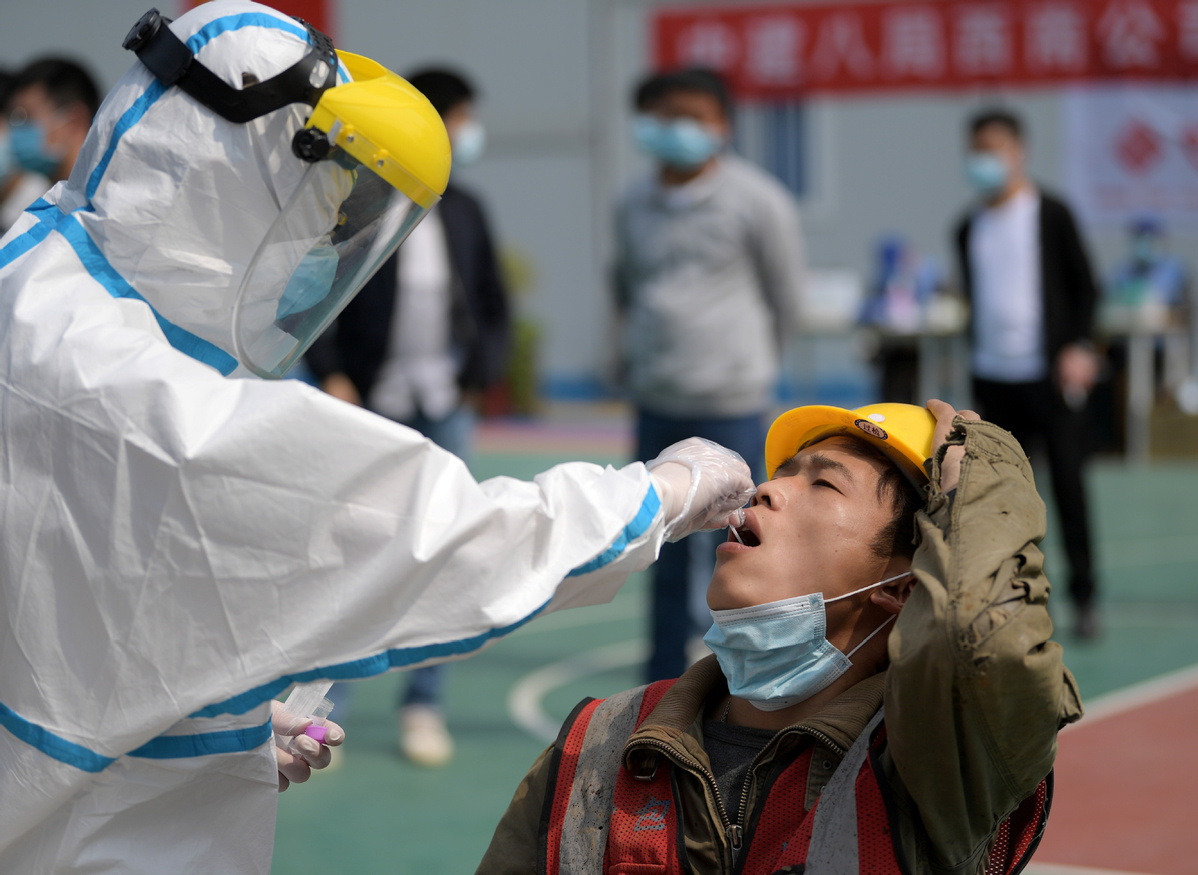
A worker in a protective suit collects a swab from a construction worker for nucleic acid test in Wuhan, Hubei province, on April 7, 2020. [Photo/Agencies]
Tell the truth and be responsible. That is exactly what the authorities in Wuhan, capital of Hubei province and the epicenter of the novel coronavirus outbreak in China, did on Friday by revising the data on the number of infections from 50,008 to 50,333, and the death toll from 2,579 to 3,869.
The revision also increased the countrywide death toll from 3,352 to 4,642.
But contrary to speculations, the lifting of the lockdown on Wuhan on April 8 provided the local authorities the opportunity to determine the scale of devastation in the city and accordingly revise the data.
That Wuhan now accounts for 83 percent of the deaths in China speaks volumes of the pain the city has suffered, particularly in the early days when test kits, hospital beds, ventilators and personal protective equipment were all in short supply, and the shortage of nucleic acid test kits meant some COVID-19 patients died before they could be diagnosed. Also, initially, the communication between some grassroots clinics and the public health emergency response team was not sound, so there was belated, missed and mistaken reporting of some deaths.
Conjectures, especially those of the devious kind, unfortunately, cannot be prevented in these truly troubled times. Yet without the sacrifice of Wuhan residents, especially during those 76 days of lockdown, the virus could have spread more rapidly across the country and beyond its borders-and claimed many more lives in China.
Despite being the first to feel the destructive force of the virus and overwhelmed, initially, China has tried every means possible to ensure its data on the epidemic are accurate. Which is important for not only other countries to devise as foolproof plans as possible to combat the epidemic, but also for China to use as reference for implementing effective pandemic-control measures.
The more accurate the data on the outbreak, the more effective would the country's measures to fight it be. And it is a measure of China's strong response to the outbreak that even after the revision of the data, the death rate remains one of the lowest among the worst-hit countries. China's relatively low fatality rate can also be attributed to the use of traditional Chinese medicine in treating COVID-19 patients. Hence the importance of China's role in the global fight against the virus.
Given that the novel coronavirus is highly contagious, no country's public health system alone is capable of coping with it. And since the world needs to combat this scourge together, stigmatization of any country, region or ethic group should be given a quiet burial.
We mourn every life lost to the outbreak. But deaths must not be used to create divides; instead they should bring countries and people closer, so we can defeat the common enemy.


